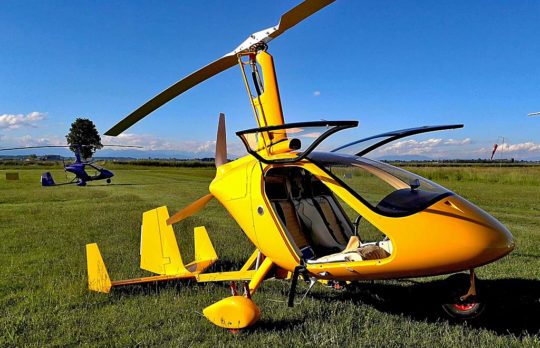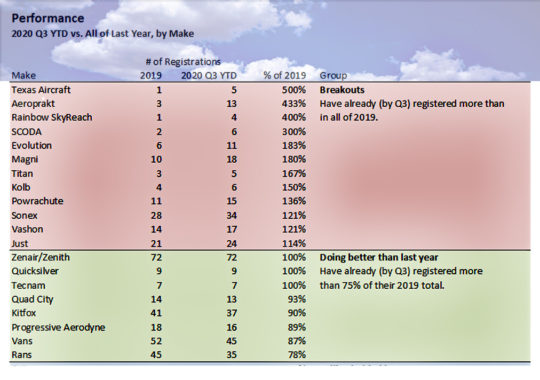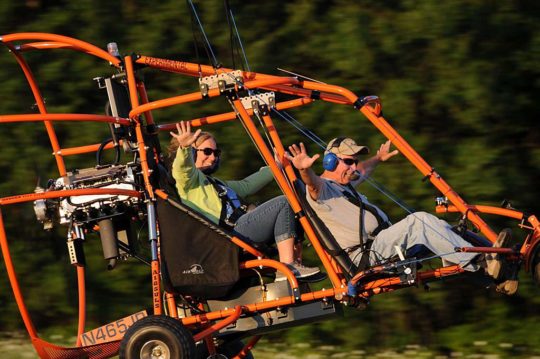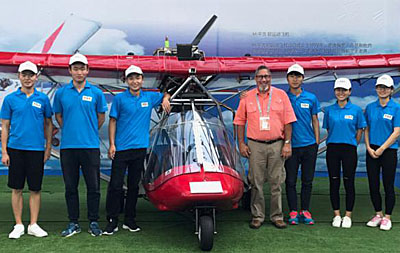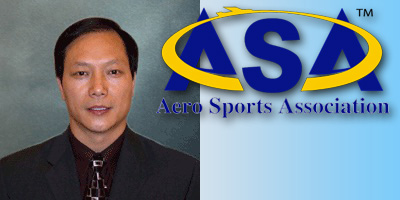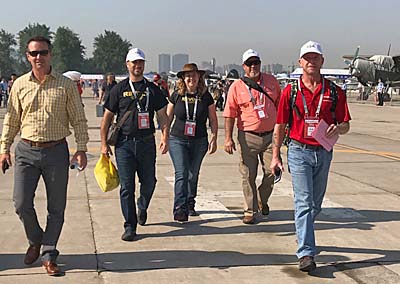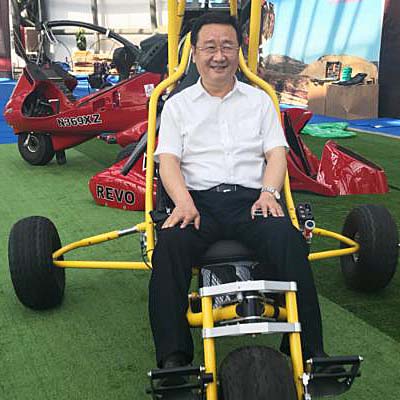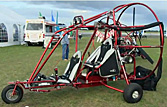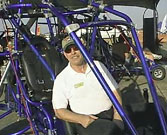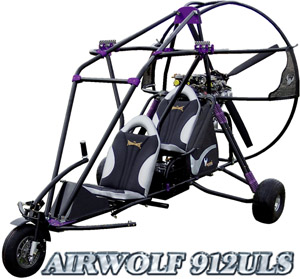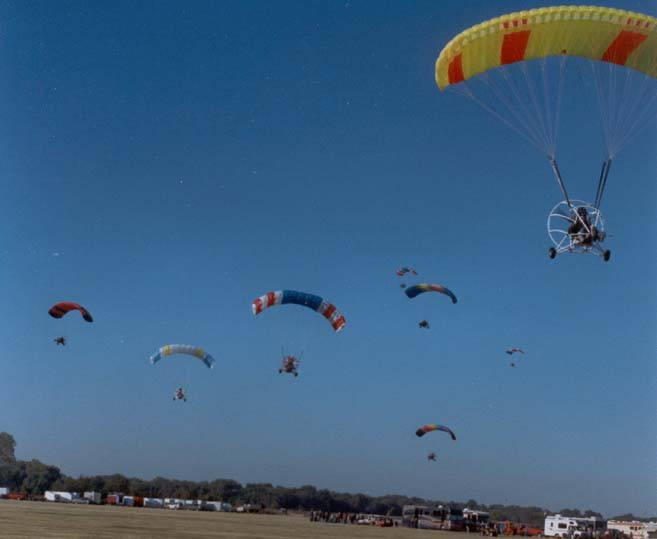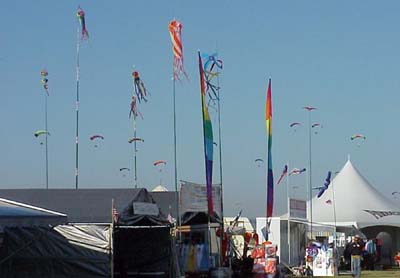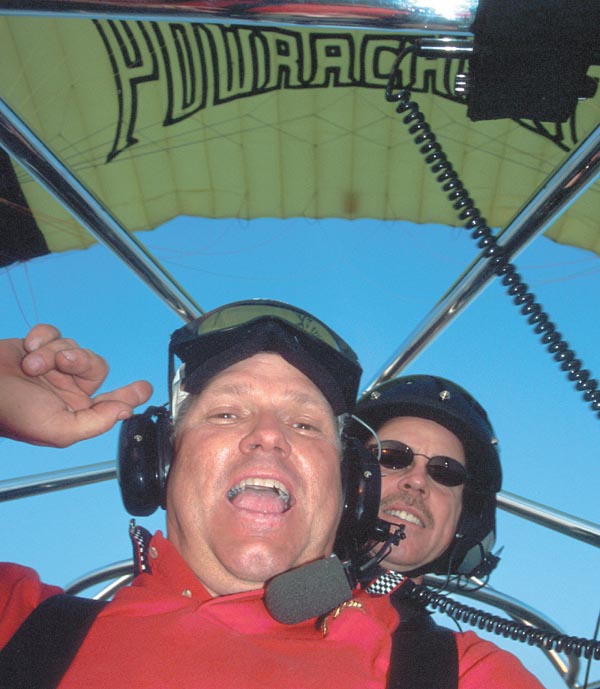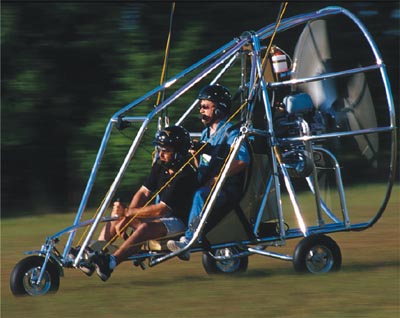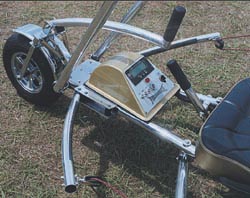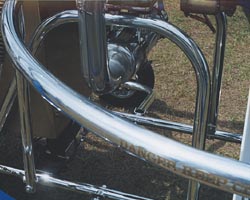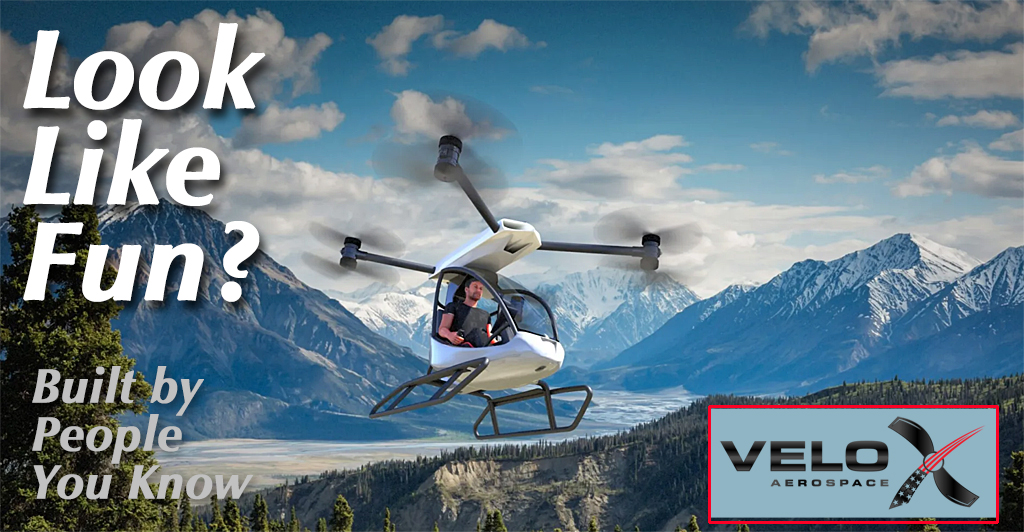
Here’s a helicopter-like aircraft you might actually consider. I have often reviewed what I call multicopters (several articles). I searched for aircraft you might fly for fun; several of them can enjoy the freedom and special benefits of Part 103. I’ve stayed away from commercial “air taxi” projects. But what if a longtime producer of Light-Sport Aircraft entered the space? What if the aircraft looked like a helicopter but one you could fly without the steep learning curve? What if it offered 45 minutes of flight with a 15-minute reserve? The earliest entries had short flight times, 15-20 minutes. Most of them cost too much. For example, Opener’s Blackfly (now called Helix) was first promoted at the cost of a “luxury SUV,” perhaps meaning $80,000 at the time. It has since more than doubled in price. You may doubt or dislike these flying machines, especially when you don’t know the people behind the projects.


 But what if a longtime producer of Light-Sport Aircraft entered the space? What if the aircraft looked like a helicopter but one you could fly without the steep learning curve? What if it offered 45 minutes of flight with a 15-minute reserve?
The earliest entries had short flight times, 15-20 minutes. Most of them cost too much. For example, Opener's Blackfly (now called Helix) was first promoted at the cost of a "luxury SUV," perhaps meaning $80,000 at the time. It has since more than doubled in price.
But what if a longtime producer of Light-Sport Aircraft entered the space? What if the aircraft looked like a helicopter but one you could fly without the steep learning curve? What if it offered 45 minutes of flight with a 15-minute reserve?
The earliest entries had short flight times, 15-20 minutes. Most of them cost too much. For example, Opener's Blackfly (now called Helix) was first promoted at the cost of a "luxury SUV," perhaps meaning $80,000 at the time. It has since more than doubled in price.
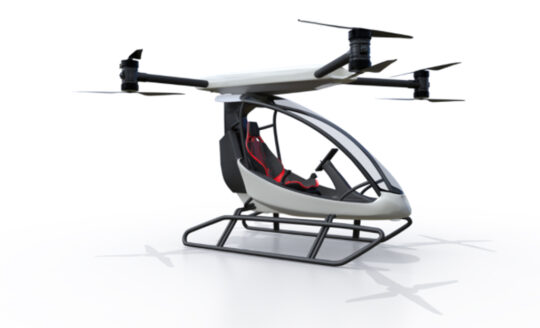
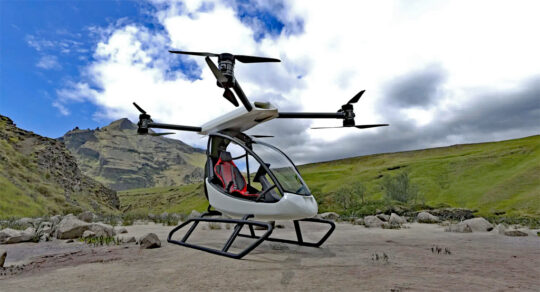 Look at the nearby renderings. A prototype is flying now in tethered radio-controlled flight. Two more development aircraft will follow in preparation for the coming Mosaic regulation. Galen said they expect to fit in as a helicopter or powered-lift aircraft; both categories are included in the proposed new rule.
Going this regulatory route means Velocitor does not have to meet Part 103's restrictive rules. This allows a strong fuselage with enough battery energy to give you a reasonable flight time. It also means the aircraft can be recharged with a single plug. Batteries don't have to be swapped out as on other entries.
Look at the nearby renderings. A prototype is flying now in tethered radio-controlled flight. Two more development aircraft will follow in preparation for the coming Mosaic regulation. Galen said they expect to fit in as a helicopter or powered-lift aircraft; both categories are included in the proposed new rule.
Going this regulatory route means Velocitor does not have to meet Part 103's restrictive rules. This allows a strong fuselage with enough battery energy to give you a reasonable flight time. It also means the aircraft can be recharged with a single plug. Batteries don't have to be swapped out as on other entries.
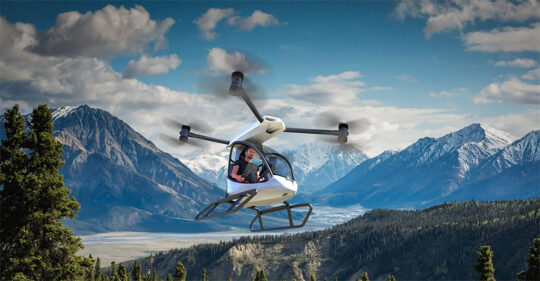 Eight motors on four booms offers safety redundancy; other models use up to 18 motors with a battery for each.
Velocitor's empty weight is about 500 pounds but it has four times more battery energy than other entries.
Eight motors on four booms offers safety redundancy; other models use up to 18 motors with a battery for each.
Velocitor's empty weight is about 500 pounds but it has four times more battery energy than other entries.
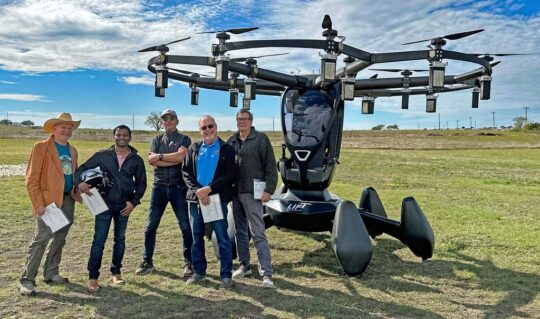
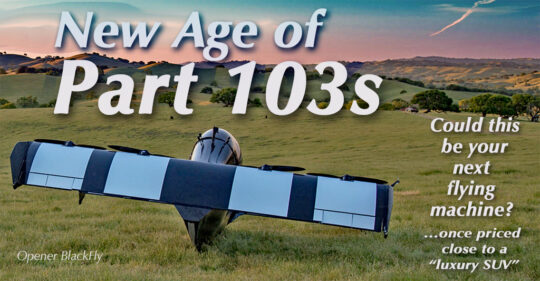
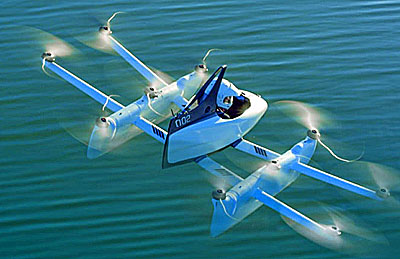
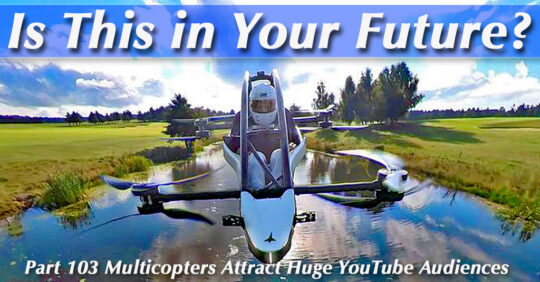

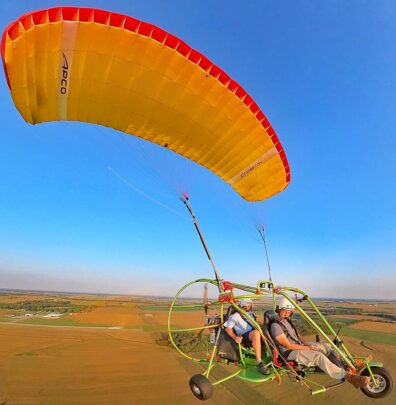
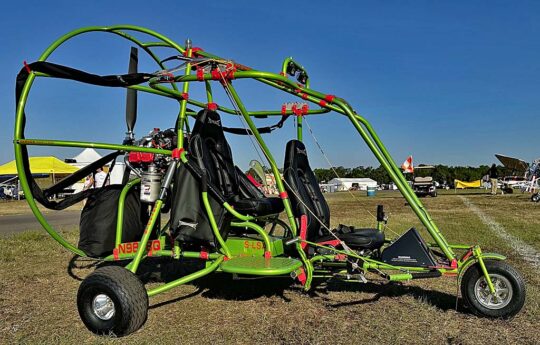
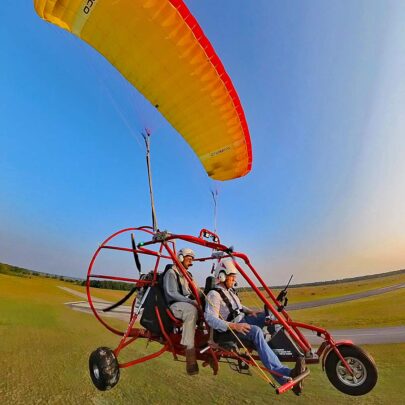 Powered parachute, or PPC, enthusiasts are their own breed, some say. Maybe so, but how is that different than, say, seaplanes or floatplanes, motorgliders, weight-shift trikes, gyroplanes, or hang gliders? Each of these segments also enjoys a loyal following.
Indeed, as Powrachute owner Galen Geigley states in the video below, more than 8,000 powered parachutes are flying in the USA. The high-volume sales from two decades back may have matured but a substantial number of pilots ended up loving their PPCs.
Powered parachute, or PPC, enthusiasts are their own breed, some say. Maybe so, but how is that different than, say, seaplanes or floatplanes, motorgliders, weight-shift trikes, gyroplanes, or hang gliders? Each of these segments also enjoys a loyal following.
Indeed, as Powrachute owner Galen Geigley states in the video below, more than 8,000 powered parachutes are flying in the USA. The high-volume sales from two decades back may have matured but a substantial number of pilots ended up loving their PPCs.
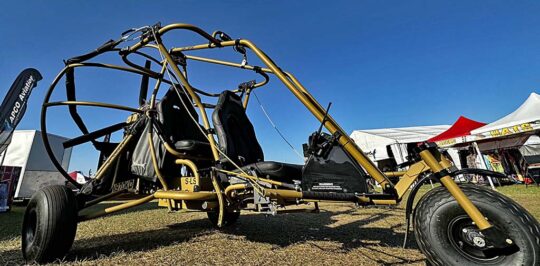 Based in Hastings, Michigan,
Based in Hastings, Michigan, 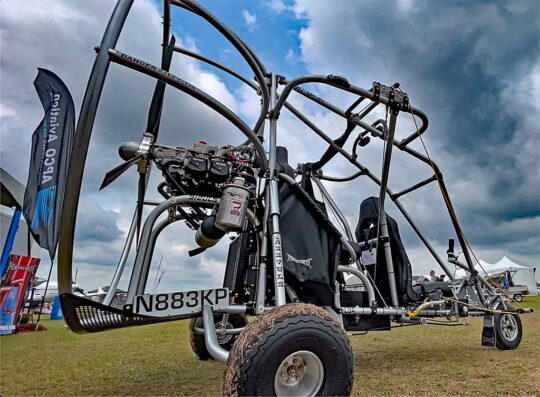
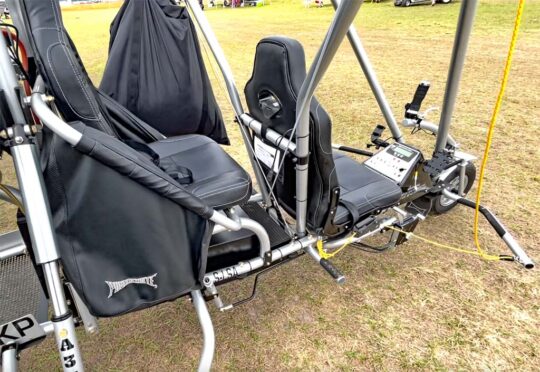 Powrachute delivers a lot of aircraft for the money. In 2023, the high-end AirWolf 912 sells for thousands less than the average price of a new car despite the latter being built by the hundreds of thousands.
Powrachute delivers a lot of aircraft for the money. In 2023, the high-end AirWolf 912 sells for thousands less than the average price of a new car despite the latter being built by the hundreds of thousands.
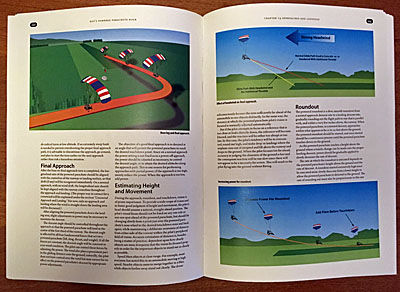 He also sold more new powered parachutes than any other dealer for Powrachute, the largest manufacturer in the sport (certificate image). Finally, his YouTube channel emphasizing powered parachute flying obtained more subscribers than anyone else in the niche.
He continues to work on improving training in the sport by working on a second edition to his book (
He also sold more new powered parachutes than any other dealer for Powrachute, the largest manufacturer in the sport (certificate image). Finally, his YouTube channel emphasizing powered parachute flying obtained more subscribers than anyone else in the niche.
He continues to work on improving training in the sport by working on a second edition to his book (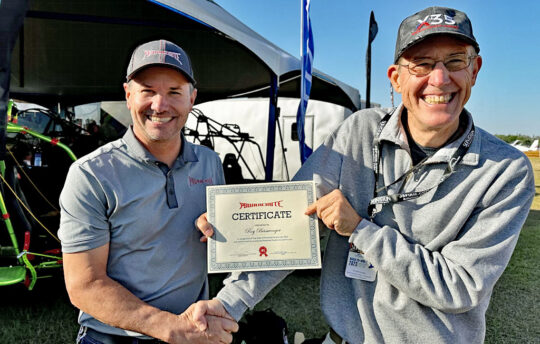
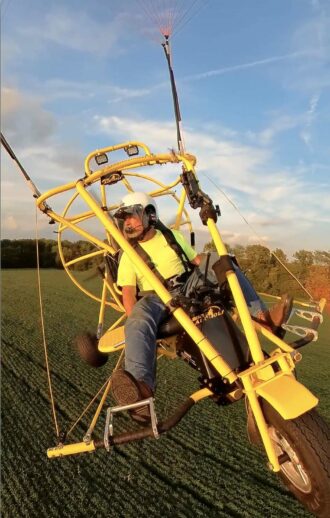 FAA has two ways to correct that, Roy noted. "One is to create commercial ratings for powered parachute and weight-shift-control (trike) pilots," he claririfed. "Another is to allow powered parachute and weight shift control pilots rated at the private level to perform commercial work in special light sport aircraft. In either case, the FAA would also have to allow powered parachutes and weight shift control aircraft as special light sport to be used for commercial work."
Powered parachutes have a lot of potential uses for agriculture, construction, and surveying, Roy observed. "Hopefully the FAA will allow the industry to tap some of that potential with the final Mosaic rule."
FAA has two ways to correct that, Roy noted. "One is to create commercial ratings for powered parachute and weight-shift-control (trike) pilots," he claririfed. "Another is to allow powered parachute and weight shift control pilots rated at the private level to perform commercial work in special light sport aircraft. In either case, the FAA would also have to allow powered parachutes and weight shift control aircraft as special light sport to be used for commercial work."
Powered parachutes have a lot of potential uses for agriculture, construction, and surveying, Roy observed. "Hopefully the FAA will allow the industry to tap some of that potential with the final Mosaic rule."
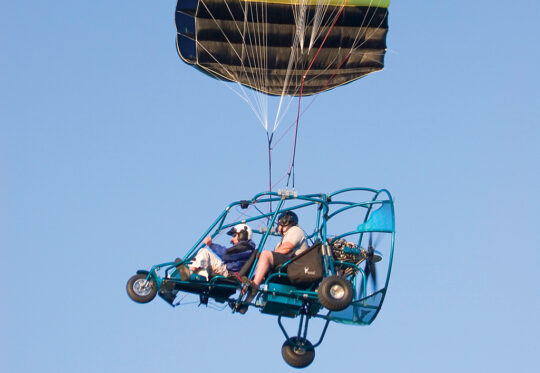
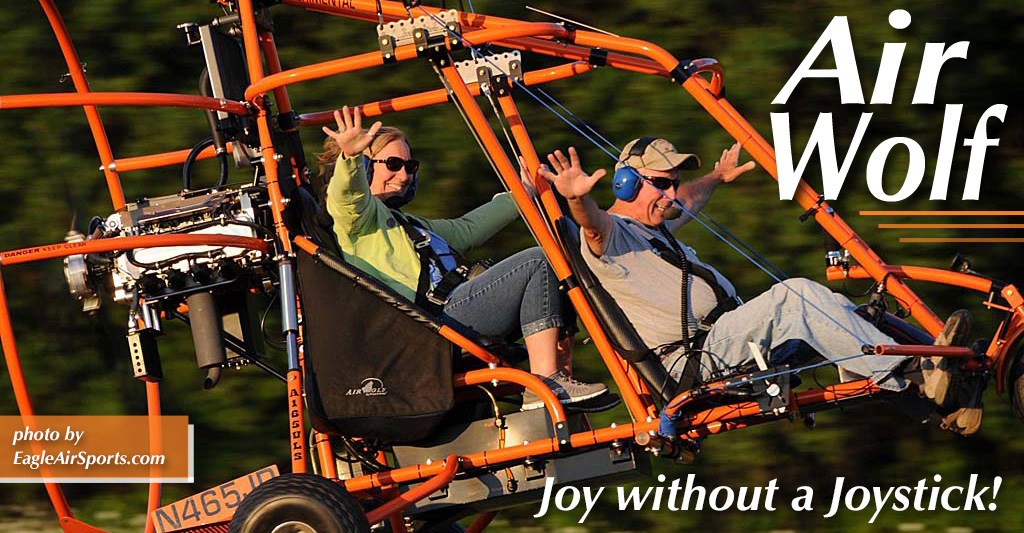
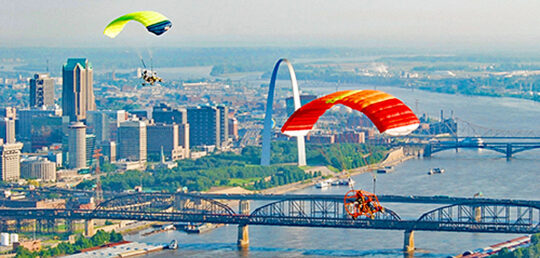 Some who try eventually hit upon the right formula but no one says this is easy. Technology has been particularly helpful to smaller enterprises, especially those that serve customers widely dispersed across the country. Whatever you think of social media, the fact is they help those with specialized interests find people who can provide services.
Some who try eventually hit upon the right formula but no one says this is easy. Technology has been particularly helpful to smaller enterprises, especially those that serve customers widely dispersed across the country. Whatever you think of social media, the fact is they help those with specialized interests find people who can provide services.
 One fellow has found his magic carpet. His instruction calendar has a few available slots in 2023 but he has already almost filled this year's schedule book. How did one man succeed and who is this story about?
One fellow has found his magic carpet. His instruction calendar has a few available slots in 2023 but he has already almost filled this year's schedule book. How did one man succeed and who is this story about?
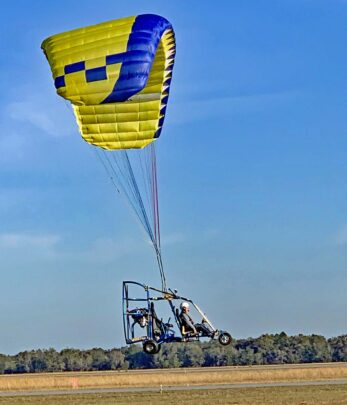 That work has been gratifying — and helped move the entire LSA industry forward — but Roy's personal choice of flight and his passion is focused on powered parachutes.
While he was working in this field and building his enterprise, Roy and I linked up in a new way in 2014, the 10th anniversary of SP/LSA. Roy had compiled many aspects of the regulation that could be improved. He assembled an impressive booklet of desirable changes complete with suggestions. Working together, Roy and I drew people from industry, from membership associations, and from FAA to a meeting at Sun 'n Fun nine years ago.
That work has been gratifying — and helped move the entire LSA industry forward — but Roy's personal choice of flight and his passion is focused on powered parachutes.
While he was working in this field and building his enterprise, Roy and I linked up in a new way in 2014, the 10th anniversary of SP/LSA. Roy had compiled many aspects of the regulation that could be improved. He assembled an impressive booklet of desirable changes complete with suggestions. Working together, Roy and I drew people from industry, from membership associations, and from FAA to a meeting at Sun 'n Fun nine years ago.
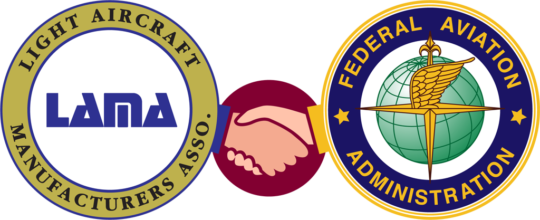 Roy's hard work on advocacy for LSA — for which I was honored to be his partner at twisting FAA's arm — has paid off in a big way. The coming regulation incorporates every initiative that Roy and I proposed for Mosaic.
Roy's hard work on advocacy for LSA — for which I was honored to be his partner at twisting FAA's arm — has paid off in a big way. The coming regulation incorporates every initiative that Roy and I proposed for Mosaic.
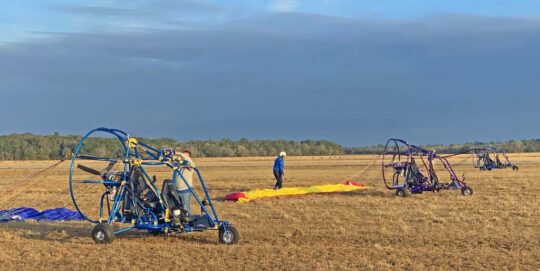 But important as this work may be, that's enough about advocacy. Let's talk about flying machines!
But important as this work may be, that's enough about advocacy. Let's talk about flying machines!
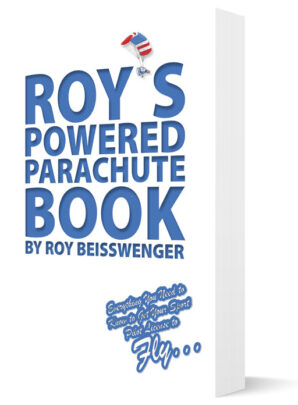 Roy's training program begins before the student gets to the airport. Anyone anywhere can start by studying a book Roy wrote on the subject. Roy’s Powered Parachute Book has 470 pages of content covering every aspect of flying powered parachutes. The inch-thick, large-format book is densely illustrated with many beautiful graphics that help explain everything. Roy admitted, “Writing a book wasn’t nearly as hard as illustrating the book.”
He combines the textbook with online training using the Brainscape app. Roy explained, “There is a lot of material to retain when learning to fly. By starting the ground training at home, students are able to get through the flight training, the knowledge test, and the check ride that much faster and stress-free.”
Roy's training program begins before the student gets to the airport. Anyone anywhere can start by studying a book Roy wrote on the subject. Roy’s Powered Parachute Book has 470 pages of content covering every aspect of flying powered parachutes. The inch-thick, large-format book is densely illustrated with many beautiful graphics that help explain everything. Roy admitted, “Writing a book wasn’t nearly as hard as illustrating the book.”
He combines the textbook with online training using the Brainscape app. Roy explained, “There is a lot of material to retain when learning to fly. By starting the ground training at home, students are able to get through the flight training, the knowledge test, and the check ride that much faster and stress-free.”
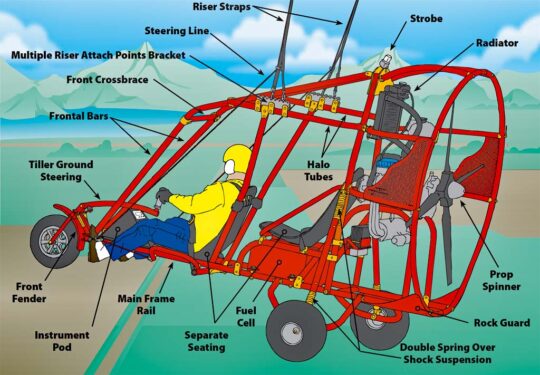
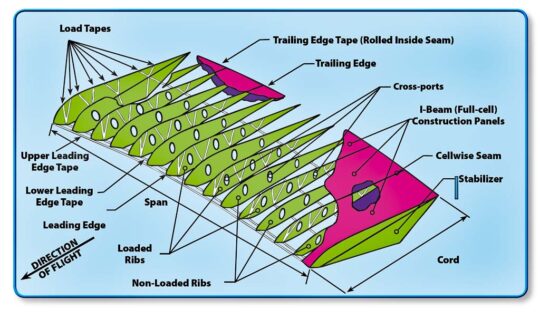 Thanks to a commitment to the safest practices, in the 30 years that Roy has been training powered parachutes, his program has been injury-free.
One of the key advantages of powered parachutes is their simplicity. These aircraft are designed to be easy to operate, and they require minimal training to fly. This makes them an ideal choice for people who are new to aviation, or who are looking for a more relaxed flying experience. The slow flying speed of powered parachutes makes them ideal low altitude sightseeing aircraft.
Thanks to a commitment to the safest practices, in the 30 years that Roy has been training powered parachutes, his program has been injury-free.
One of the key advantages of powered parachutes is their simplicity. These aircraft are designed to be easy to operate, and they require minimal training to fly. This makes them an ideal choice for people who are new to aviation, or who are looking for a more relaxed flying experience. The slow flying speed of powered parachutes makes them ideal low altitude sightseeing aircraft.
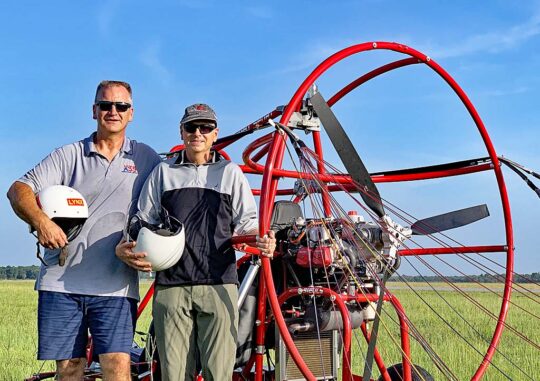
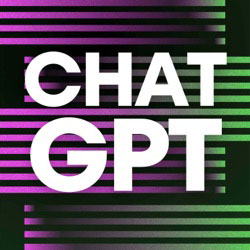 As an experiment, this article was triggered by Roy asking ChatGPT to write a draft as though it was written by me. Roy tweaked it and sent it to me for final editing.
Is that still an AI-produced document? Well, yes and no. It certainly changed through human input. However, it was helpful to move things along more quickly and that's one of the benefits many are seeing with this new technology. Since pilots are quite technically interested and adept, I thought readers would enjoy hearing about this use of AI.
As an experiment, this article was triggered by Roy asking ChatGPT to write a draft as though it was written by me. Roy tweaked it and sent it to me for final editing.
Is that still an AI-produced document? Well, yes and no. It certainly changed through human input. However, it was helpful to move things along more quickly and that's one of the benefits many are seeing with this new technology. Since pilots are quite technically interested and adept, I thought readers would enjoy hearing about this use of AI.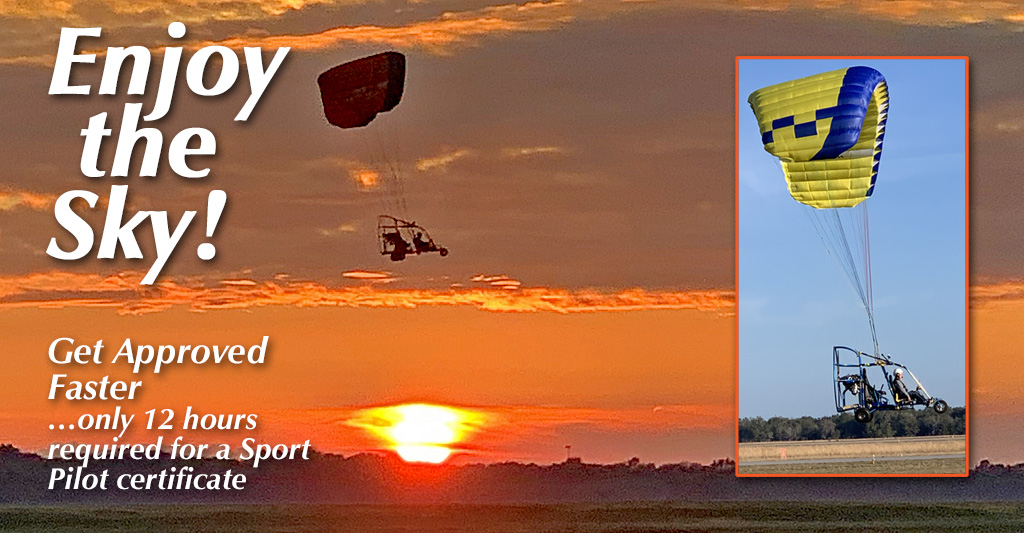
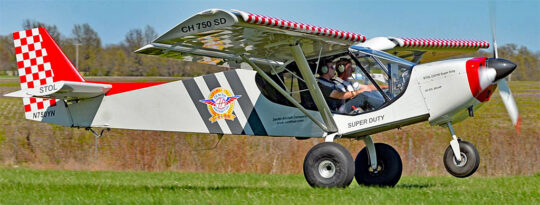
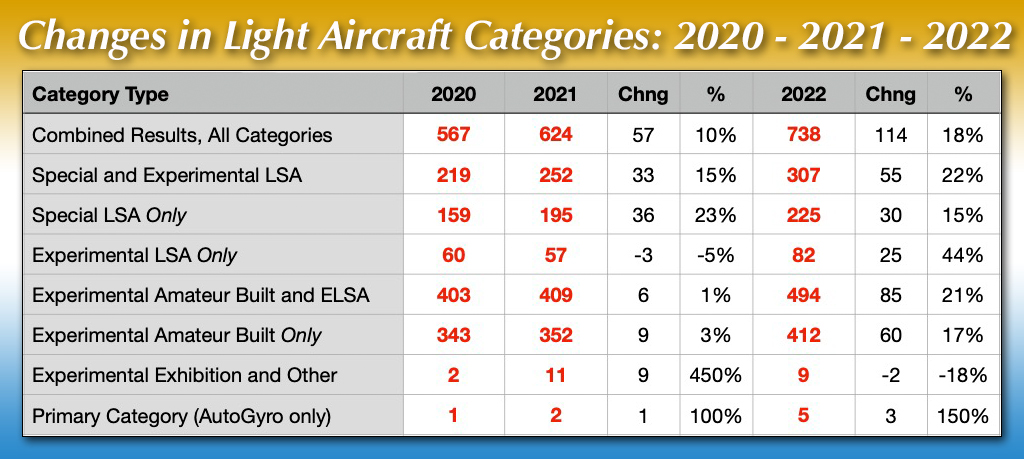
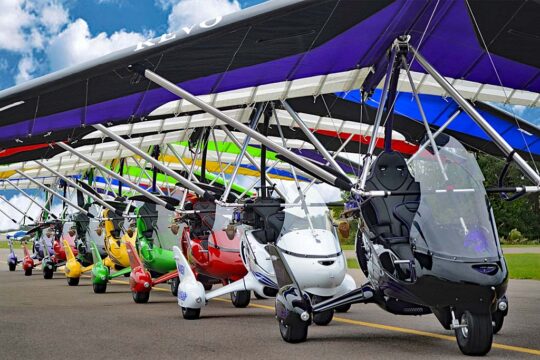
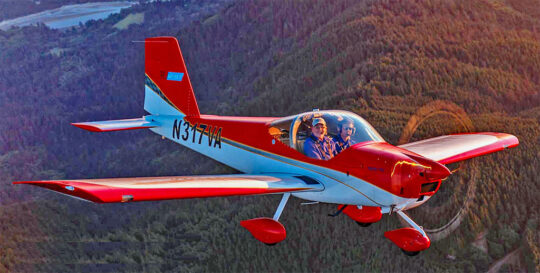
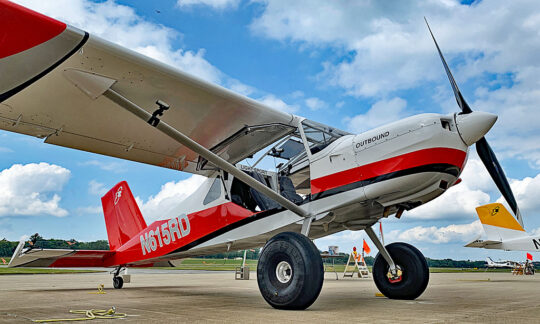
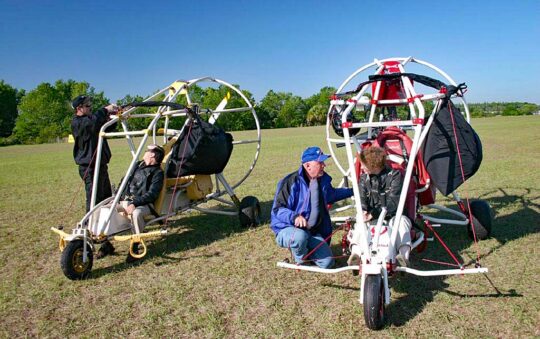
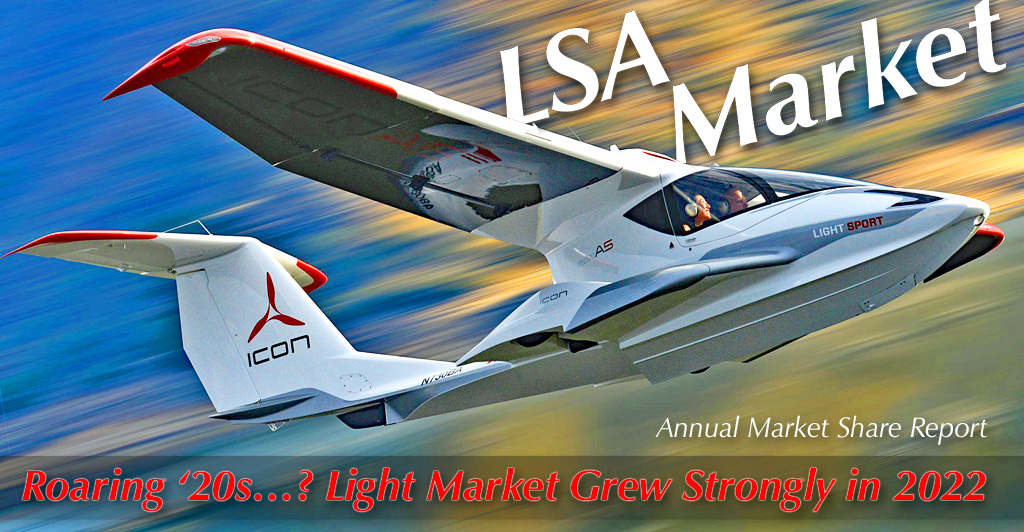
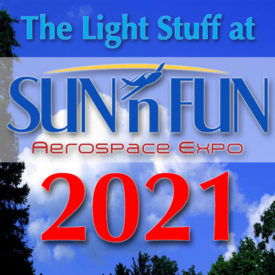 We continue with further coverage from the first major airshow in almost two years… THANKS to
We continue with further coverage from the first major airshow in almost two years… THANKS to 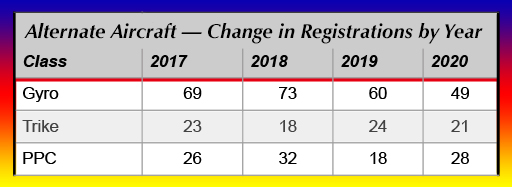 Counting all types, the "alternative aircraft" sector may account for a quarter or more of all LSA sales. Alternative aircraft have attributes that drive customer inquiries: better affordability and unique flying qualities.
Not interested in alternative aircraft? That's hardly surprising as most American pilots were trained in conventional, three-axis, tractor-engined aircraft, usually with a control wheel and rudder pedals. Most of those pilots will stick with a familiar configuration and therefore the LSA market caters to that large pilot community. Others yearn for something different or something more affordable.
Counting all types, the "alternative aircraft" sector may account for a quarter or more of all LSA sales. Alternative aircraft have attributes that drive customer inquiries: better affordability and unique flying qualities.
Not interested in alternative aircraft? That's hardly surprising as most American pilots were trained in conventional, three-axis, tractor-engined aircraft, usually with a control wheel and rudder pedals. Most of those pilots will stick with a familiar configuration and therefore the LSA market caters to that large pilot community. Others yearn for something different or something more affordable.
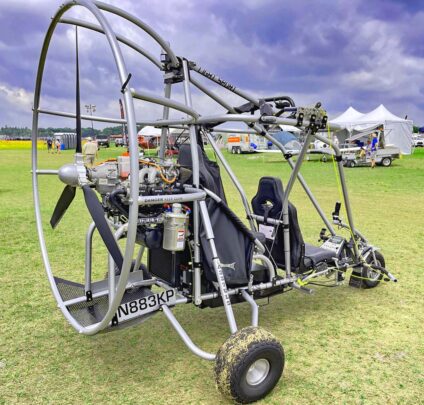 Powrachute Powerhouse
Powrachute Powerhouse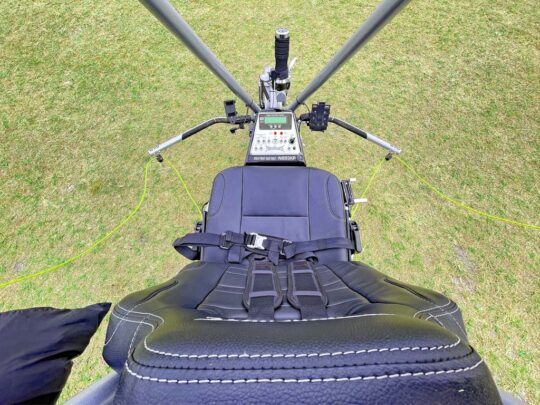
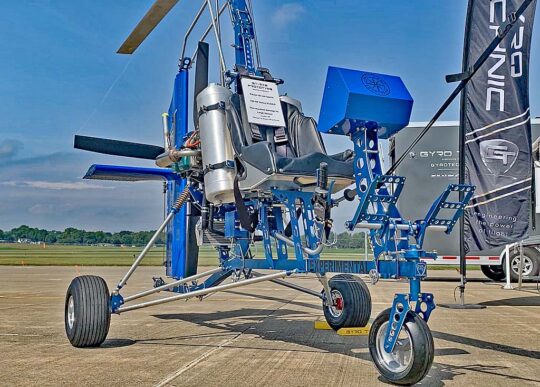 While the idea may have been invented many years ago in the USA, Europeans adopted the type in the 2000s and took the idea further. They also worked out flight characteristics to make these contemporary machines easier to fly. My experience with them (see this
While the idea may have been invented many years ago in the USA, Europeans adopted the type in the 2000s and took the idea further. They also worked out flight characteristics to make these contemporary machines easier to fly. My experience with them (see this 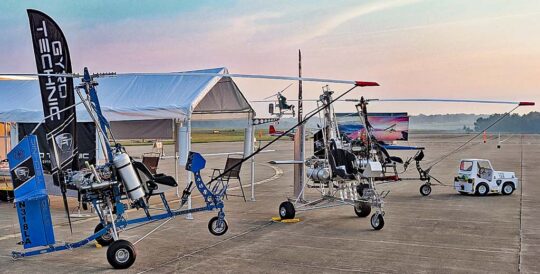 Those older American gyroplanes — think: Bensen Gyrocopter — were nearly all single seaters. Maybe that was best then, when stability was different than today. Then I discovered the VX1 at the Midwest LSA Expo. Hmmm, a modern gyroplane with all the present-day knowledge but in single seat form. Intriguing. It doesn't look like other modern gyros and the video below will explain.
Lots of buyers want a second seat for a friend or their spouse yet more often than not aircraft are flown solo. A single seat aircraft has some advantages and the pilot can merely enjoy him or herself without have to assure their passenger is comfortable. Single seaters can also cost less partly because they don't need as much engine.
Combine these attributes with some of the finest, beautifully-accented machine work you'll ever see and Gyro Technic truly has something in their VX1. Finally, the Minnesota company is rare in that it also makes its own rotor blades and can supply other producers.
Those older American gyroplanes — think: Bensen Gyrocopter — were nearly all single seaters. Maybe that was best then, when stability was different than today. Then I discovered the VX1 at the Midwest LSA Expo. Hmmm, a modern gyroplane with all the present-day knowledge but in single seat form. Intriguing. It doesn't look like other modern gyros and the video below will explain.
Lots of buyers want a second seat for a friend or their spouse yet more often than not aircraft are flown solo. A single seat aircraft has some advantages and the pilot can merely enjoy him or herself without have to assure their passenger is comfortable. Single seaters can also cost less partly because they don't need as much engine.
Combine these attributes with some of the finest, beautifully-accented machine work you'll ever see and Gyro Technic truly has something in their VX1. Finally, the Minnesota company is rare in that it also makes its own rotor blades and can supply other producers.
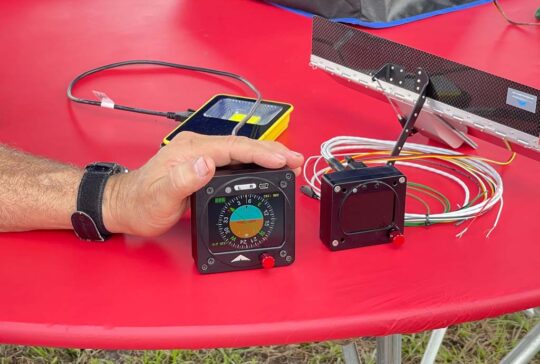 Levil Aviation greatly empowered the role of tablets in the cockpit today by pioneering the first iPad-compatible wireless avionics suite in 2009. Today's
Levil Aviation greatly empowered the role of tablets in the cockpit today by pioneering the first iPad-compatible wireless avionics suite in 2009. Today's 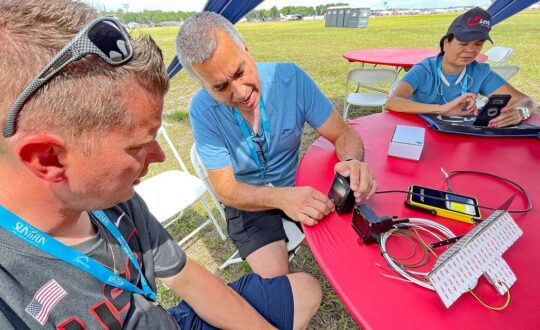
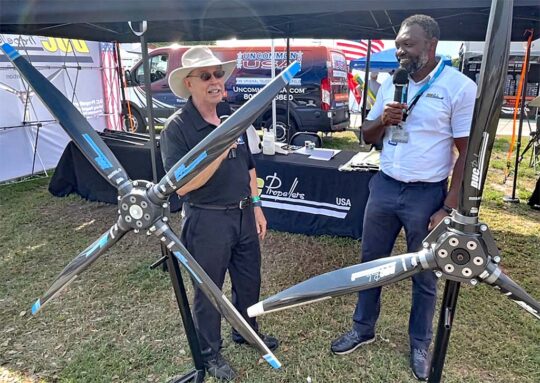 Duc Prop Success Story
Duc Prop Success Story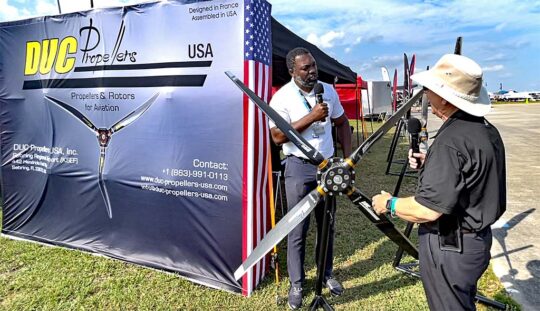 Of course, he is a sales and service outlet for Duc Hélices. Manufacturing occurs in Frontenas, France. According to Gaetan, the French enterprise is humming at its still-new
Of course, he is a sales and service outlet for Duc Hélices. Manufacturing occurs in Frontenas, France. According to Gaetan, the French enterprise is humming at its still-new 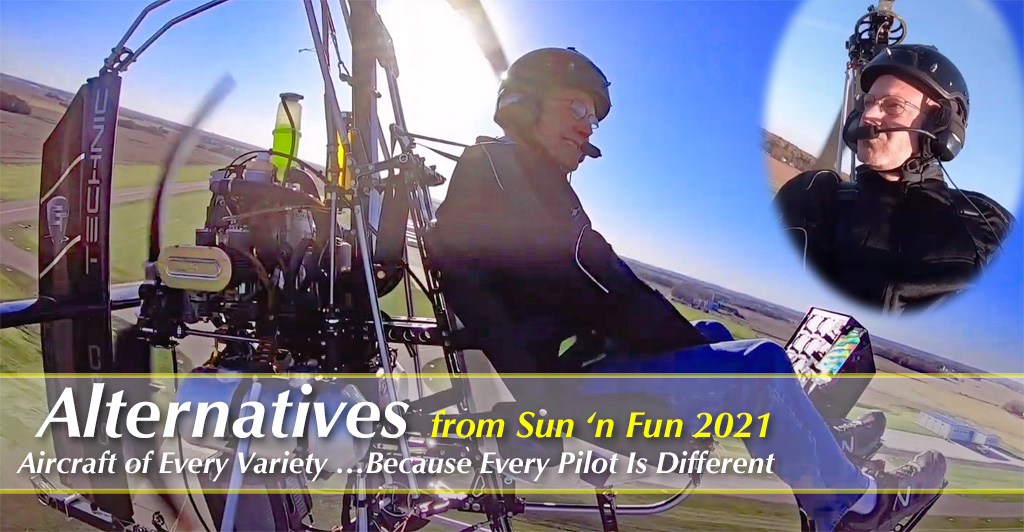
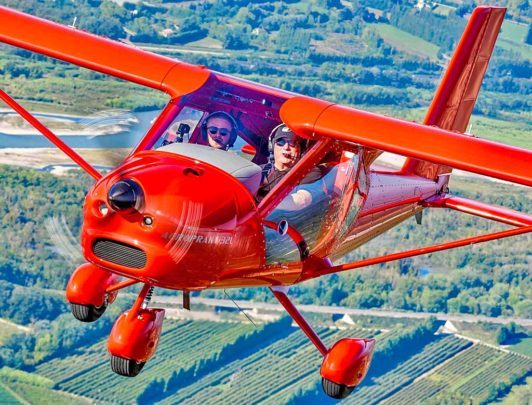 In this context, how might the aviation industry be holding up? We read — and some brave travelers have experienced first-hand — how the airline industry is in a deep hole, prompting large layoffs.
In this third quarter report for the calendar year, I'll look at some numbers for general aviation manufacturers as well as the light aviation industry that has my full focus.
The short answer: some are doing surprisingly well.
In this context, how might the aviation industry be holding up? We read — and some brave travelers have experienced first-hand — how the airline industry is in a deep hole, prompting large layoffs.
In this third quarter report for the calendar year, I'll look at some numbers for general aviation manufacturers as well as the light aviation industry that has my full focus.
The short answer: some are doing surprisingly well.
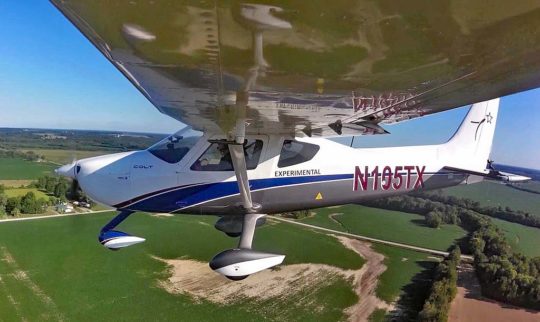 It bears repeating. You can go poke around FAA's database yourself …but while you access the same information you won't get the same details as we have here without a lot of work.
What you see here is thanks to Steve's noteworthy skills at organizing data and solving the puzzles made by aircraft with varying registration information.
To better understand Steve's marvelous work,
It bears repeating. You can go poke around FAA's database yourself …but while you access the same information you won't get the same details as we have here without a lot of work.
What you see here is thanks to Steve's noteworthy skills at organizing data and solving the puzzles made by aircraft with varying registration information.
To better understand Steve's marvelous work, 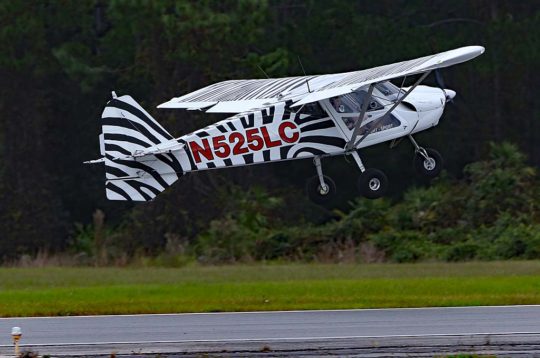 Steve summarized, "Some [producers] are doing stupendously better than last year. Others, not so much."
Some, like "Most Improved"
Steve summarized, "Some [producers] are doing stupendously better than last year. Others, not so much."
Some, like "Most Improved" 